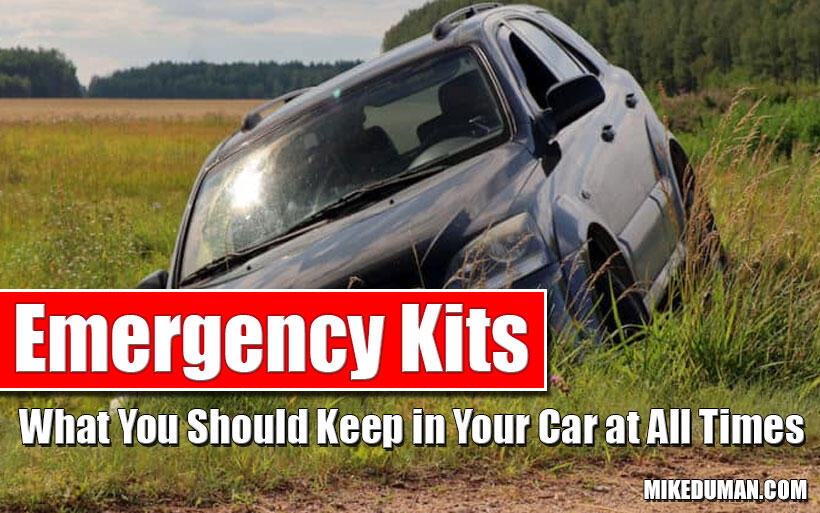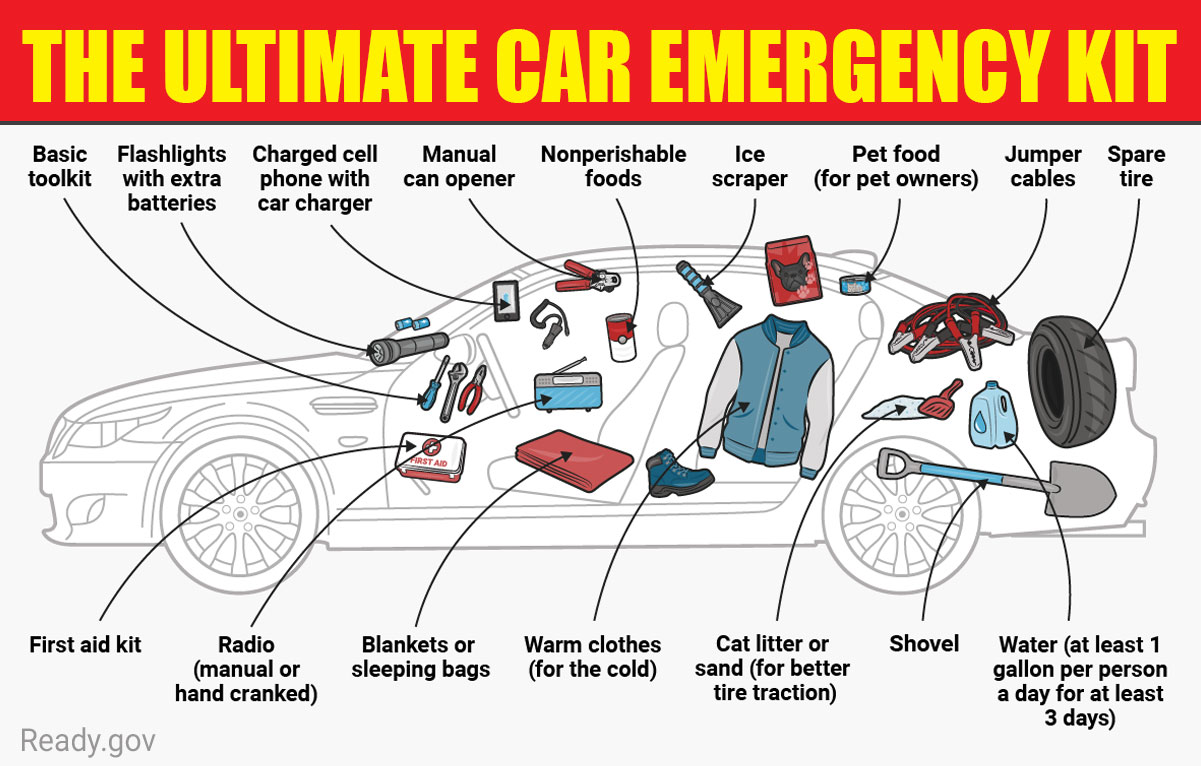
Not long ago, hundreds of Virginians spent 19 hours trapped in their cars as the weather froze I-95 into one huge parking lot. An incident like that reminds you that every vehicle should have an emergency kit. It can save you in a similar situation or after an accident.
Putting a good car emergency kit together
Although the contents of your kit will depend on your situation, a good car emergency kit includes basic supplies to protect and sustain you for three days. These basics include:
- Protection from the elements. While a tent may be excessive, warm blankets and clothing prevent hypothermia.
- Health and first aid supplies. You can purchase kits for your car. However, you can easily assemble your own with first aid supplies, basic antibiotic and pain creams, tweezers and scissors, hand cleaners, pain relievers, and baby supplies if needed. If of it on hand.
- Items that let you signal rescuers. Traditional flares are still available, but today LED flares are safe, reliable and long-lasting.
- A 72-hour kit. You can purchase pre-packed 72-hour kits for your car online, but it's easy to prepare one yourself.

Must-haves for your 72-hour kit
Designed to provide contents that will keep two people well for 72 hours, your kit should contain the following in addition to the items already mentioned:
- 1 gallon of water per person per day.
- Non-perishable food.
- Chargers for your devices.
- Flashlight (and batteries) or flashlights.
- Waterproof matches.
- Money or debit/credit card.
- Personal documents and other important information.
Odd but useful items you can add to make sure you have a good car emergency kit are large binder clips and zip ties. They can help you hold things together or in place when all else fails.

Things to consider
When assembling your emergency supplies, consider where you live and what time of year it is. For example, your water supply needs may be higher in summer than winter, particularly if you are traveling in a region where summers are hot and dry.
Think about how many people usually travel with you as well. Is it just your spouse, or do you usually have children with you? If children are on board, make sure you reflect their needs in what you bring. Children will need entertainment, and babies will need diapers and special foods. All of these should be in your kit.
What usually goes wrong in your location
 Use statistics to help decide what needs to go in a good car emergency kit for your specific location. What accidents normally happen where you're traveling? Are there more prevalent risks at that time of year? If you're in an area where there are virtually never tornados, but ice storms are common, prepare for the event that is more likely to occur.
Use statistics to help decide what needs to go in a good car emergency kit for your specific location. What accidents normally happen where you're traveling? Are there more prevalent risks at that time of year? If you're in an area where there are virtually never tornados, but ice storms are common, prepare for the event that is more likely to occur.
What next
If you're in a situation that requires you to use your kit, the first task is to keep calm and calm those with you. If you have a phone signal, call for help. Use your flares, and then stay dry and warm (or cool) in your vehicle. Generally, unless your vehicle is putting you at risk, it's better to stay with it than to go looking for help.
Keep an eye on your kit
 Food, water and medical supplies can all expire, as can batteries and the credit card in your kit. Make sure to check it periodically to replace any expired items and any that may have been used or removed without being replaced. Think about how much better the I-95 drivers who had a kit felt during their 19 hours.
Food, water and medical supplies can all expire, as can batteries and the credit card in your kit. Make sure to check it periodically to replace any expired items and any that may have been used or removed without being replaced. Think about how much better the I-95 drivers who had a kit felt during their 19 hours.
For more tips on car safety or for assistance in purchasing a used car, contact the Mike Duman Auto Superstore. We're here to help.
